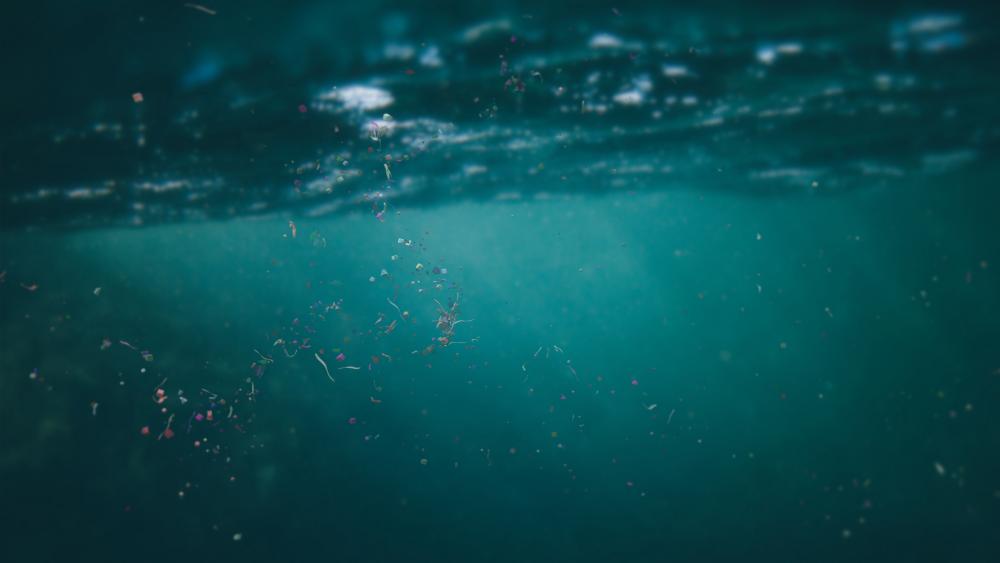
Nanoplastics can disrupt the interaction of aquatic life. I Photo: Shutterstock, Dotted Yeti
Over 350 million tons of plastics are produced annually (PlasticsEurope 2022), a significant fraction of which ultimately becomes debris in inland water bodies. The presence of plastic and its effects on aquatic ecosystems are hence of increasing interest.
Nanoplastics (NPs) are particles smaller than 100 nm. Unlike other forms of plastic, NPs raise special concerns due to their unique ability to cross cell membranes, penetrate organs, and bioaccumulate in organisms. This hazard is compounded by the potential adsorption of other environmental contaminants which may amplify their toxicity. Nanoplastics are known to be harmful to a number of aquatic species but their ecological consequences are still unclear.
Nanoparticles reduce infections of cyanobacteria
In a first study from 2021, the research team has investigated the impact of nanoplastics on the interaction between cyanobacteria and a parasitic fungus. The results showed that polystyrene nanoparticles (NPs) at high concentrations do not only inhibit the growth of cyanobacteria, but also form plastic aggregates on their surface, which in turn hampers the infection of cyanobacteria by its parasitic fungi.
Water fleas become infected more often when exposed to nanoplastics
Recently, Justyna Wolinska's team has published the results of another study for which they exposed zooplankton (Daphnia magna) to different levels of nanoparticles and investigated single and co-infections with two different species of parasites. The researchers found that it depends on the type of parasite whether and to what extent nanoplastics affect the infection: at a low NP load that had no direct negative consequences for the host, infection rates were either greatly increased (Metschnikowia) or slightly impeded (Ordospora).
"Our results indicate, firstly, that distinct parasite species can show contradictory responses to a given environmental contaminant. We also observed that nanoplastics increase the likelihood of water fleas contacting both parasites at the same time. Nanoplastics contamination could thus favour the coexistence of parasites," explained Paula Schlösser, who conducted the research as part of her MSc thesis at IGB, and who is shared first author of this study.
Plastic pollution with far-reaching consequences
Disease outcome is controlled by the interactions between host, parasite and their common environment. "The results show that nanoplastic pollution not only affects phytoplankton and zooplankton, but also their parasites and thus how species interact with each other in aquatic systems" – adds co-author Florent Manzi.
"Infectious diseases mediate complex cascading processes in the ecosystem, including nutrient cycles and host evolution, so our results warn for far-reaching consequences of plastic pollution," summarised Justyna Wolinska.
Read the article on cyanobacteria in Environmental Pollution >






